Like most of my generation, a lot of my time is spent scrolling. Scrolling through depressing news, pictures of my friends and unrealistically attractive people (the latter two coinciding more often than would be polite to admit). This trend has been accompanied by an almost equally pervasive general misconception regarding the true nature and function of what being “on your phone” is. Rather than being an Instagram filter for reality, scrolling, from my point of view, is a rejection of it; a private and personal safe space of curated content. While we may be using social media to project a different, enhanced image of our life, this is not why we consume most of our social media content. We’re not actively trying to filter our reality as much as we’re trying to escape it. While often this need to escape is purely temporary and due to boredom, it may also be due to mental illness.
Depression manifests and masks itself in many ways, and while laying around all day in bed scrolling through your phone seems like a benign, common, even attractive way to spend your days, it’s also unfortunately one manifestation of depression masked by a comfortable and “connected” aesthetic. The depressed individual now not only has to endure their symptoms, but is also subjected to the endless labour of scrolling through things they could be enjoying in reality, had they not been depressed. Scrolling becomes no longer a rejection of reality, rather a symptom of it, a disguised social isolation masquerading as a preferred activity. Misery loves company, and as long as companies are consistently fed with user information and clicks, this cycle reinforces itself.
Those savvy enough to familiarize themselves with the inner workings of this mechanism are able to manipulate it. From benign manipulation meant to gain personal popularity to less benign manipulation of public opinion to sway elections, it’s possible to “game” the system. Although they try, scientists are largely unable to compete with the data mining practices and expertise of big corporations to produce their own alternative apps. Apps meant to improve the lives of those with mental illness rather than keep them scrolling. It’s hard to underestimate the power of these large corporations and what psychologists and others not looking for profit could do with the amount of data, content, and algorithms in corporations’ possession. As we naively wait for corporations to do the right thing, an organic over the internet interpersonal support platform has almost spontaneously begun to sprout.
In 1976, Richard Dawkins coined the term ‘meme’ to refer to a unit of cultural transmission, whether it be a method of agriculture, or a type of government. Memes/ideas have the ability to transcend time, place, and the individual to help the entire species. Today, the word “meme” is largely synonymous with internet jokes. A particular motif/image/video that is shaped and manipulated by anonymous individuals all over the world, some adding a part of their real world personal experience, with the motive of making others laugh. An inside joke of sorts shared between millions of people connected only by the fact that they find the meme funny or relatable.
In our past, this cultural transmission was used to keep future generations alive. As 19th century English Biologist Thomas Huxley put it: “The struggle for existence holds as much in the intellectual as in the physical world”, now as we, the privileged in ‘developed’ countries, struggle less and less with the demands of the physical world, our more personal inner struggles find light. Intergenerational concepts of religious spirituality, self-care and healing still hold in most parts of the globe, but as archaic societal ideas fail many of us. An entire generation has found itself, knowingly or unknowingly, looking at their screens for help. I say unknowingly since I only realized this retrospectively. A quick scroll back in time through my Facebook page or private chats shows me that many of the concepts that have helped me through hard times I learned about first, from memes. It was silly internet jokes rather than my formal university education and healthcare system that first introduced me to the concept of self-care. It was the sense of connectedness and comradery that comes from an “inside joke” that made me feel like it was okay not to feel “okay”.
The first such memes I noticed were subtle in nature, typically describing emotional difficulties that most of us experience at some point our lives, rather than symptoms of mental illness.
The examples below show symptoms of anxiety and depression respectively, presented sarcastically without the explicit mentioning of either.

Image 3
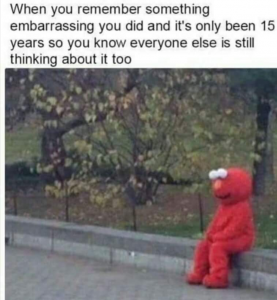
Image 1

image 2
This was a “coming out” of sorts, as more people responded positively to these previously too personal topics, the jokes began to become more explicit. The examples below simultaneously target self and external stigma by both explicitly mentioning the name of the illness while reminding the reader that it is the illness not the person with the illness that is responsible for the symptom.
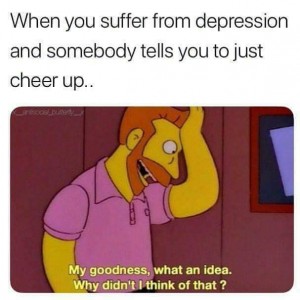
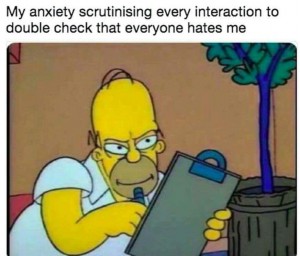
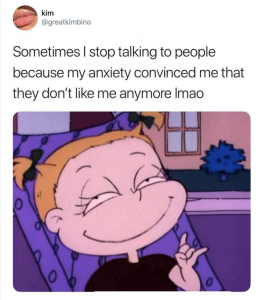
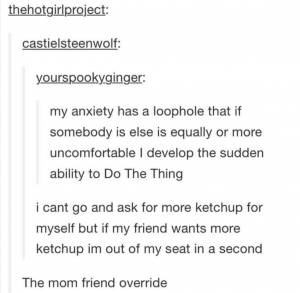
Memes then became more specific; meme formats that highlighted explicit symptoms of mental illness became more prevalent. Image 1 explicitly mentions dissociating (a symptom of depression), while Image 2 discusses self-care failing to help/not working.
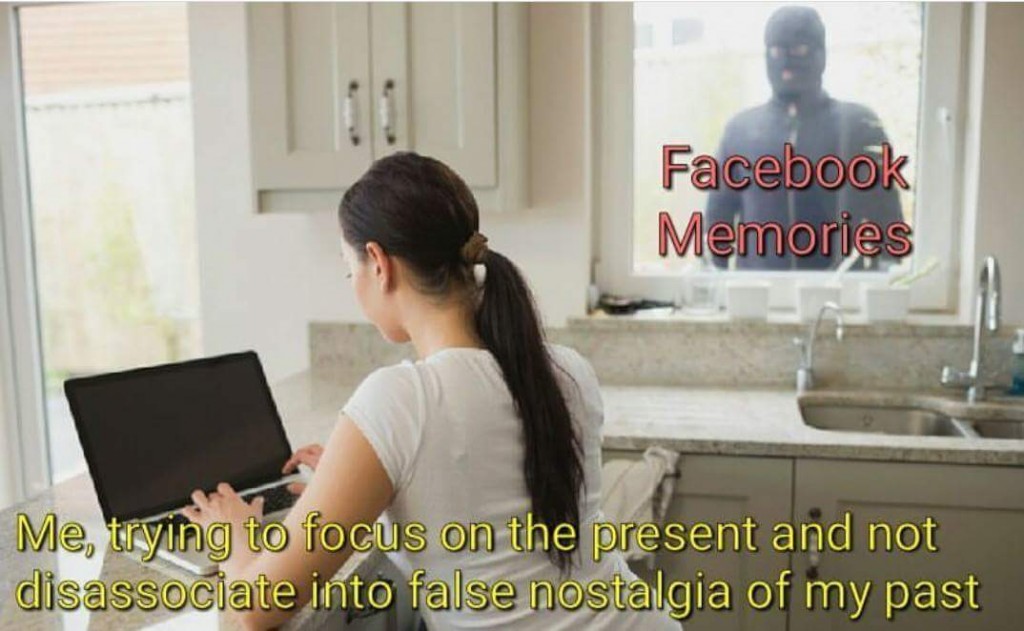
Image 1



Image 4
Images 3 and 4 go as far as almost being a list of symptoms. Image 3 is self-referential in that it positions the idea that memes can be used as a coping mechanism. A topic that’s also discussed in Image 5, memes are illustrated as working in tandem with medications as a suicide prevention strategy.

Image 5
Where do we go from here?
Advances are still needed in terms of developing and refining effective treatments for people with mental illness. But in the meantime, we need to also focus on improving access to the treatments and information we DO have: attention to closing the proverbial knowledge to action gap (CIHR, 2016) is key.
Memes have, from my perspective, helped us normalize mental suffering and address stigma. The first step, exposing our collective wounds, has been made. Is it possible to use the same mechanism to promote wellbeing? Actively “coerce” the consumer into action? That remains to be seen. What is clear though is that this organic form of sharing and discussing sensitive topics did not develop out of nowhere. There’s a gap between professionals and the general public that needed to be filled. What’s referred to as the science of ‘Knowledge Translation’ may hold one key.
The Canadian Institute of Health Research (CIHR) defines Knowledge Translation as “a dynamic and iterative process that includes synthesis, dissemination, exchange and ethically-sound application of knowledge” <to improve the health of Canadians, provide more effective health services and products and strengthen the health care system>.” How do memes fit within this definition? Let’s break it down:
| “A dynamic and iterative process”: |
Memes are this in a nutshell; they’re constantly updated based on what is culturally relevant at the time. They are iteratively modified to fit the individual producing them, meaning there’s always something for everyone, and the content will always seem relevant due to the dynamic nature of having people with lived experience create the content.
| “synthesis, dissemination , exchange”: |
| Memes seem to use humour/entertainment to increase spread. People “share and like”/disseminate memes they find entertaining. They harness the power of entertainment and intrinsic motivations for e” “like’-based approval for spontaneous synthesis, dissemination, and exchange of first-hand experience, at no cost. |
As stated in the definition, the goal of KT is “to improve the health of Canadians, provide more effective health services and products and strengthen the health care system”. By dismissing an entire class of communication as “just for fun”, we miss out on large, young, and vulnerable groups of the population that already have the communication infrastructure in place.
Government of Canada, Canadian Institutes of Health Research, & Institute Affairs. (2016, July 28). About CIHR. Retrieved April 14, 2018, from http://www.cihr-irsc.gc.ca/e/29418.html
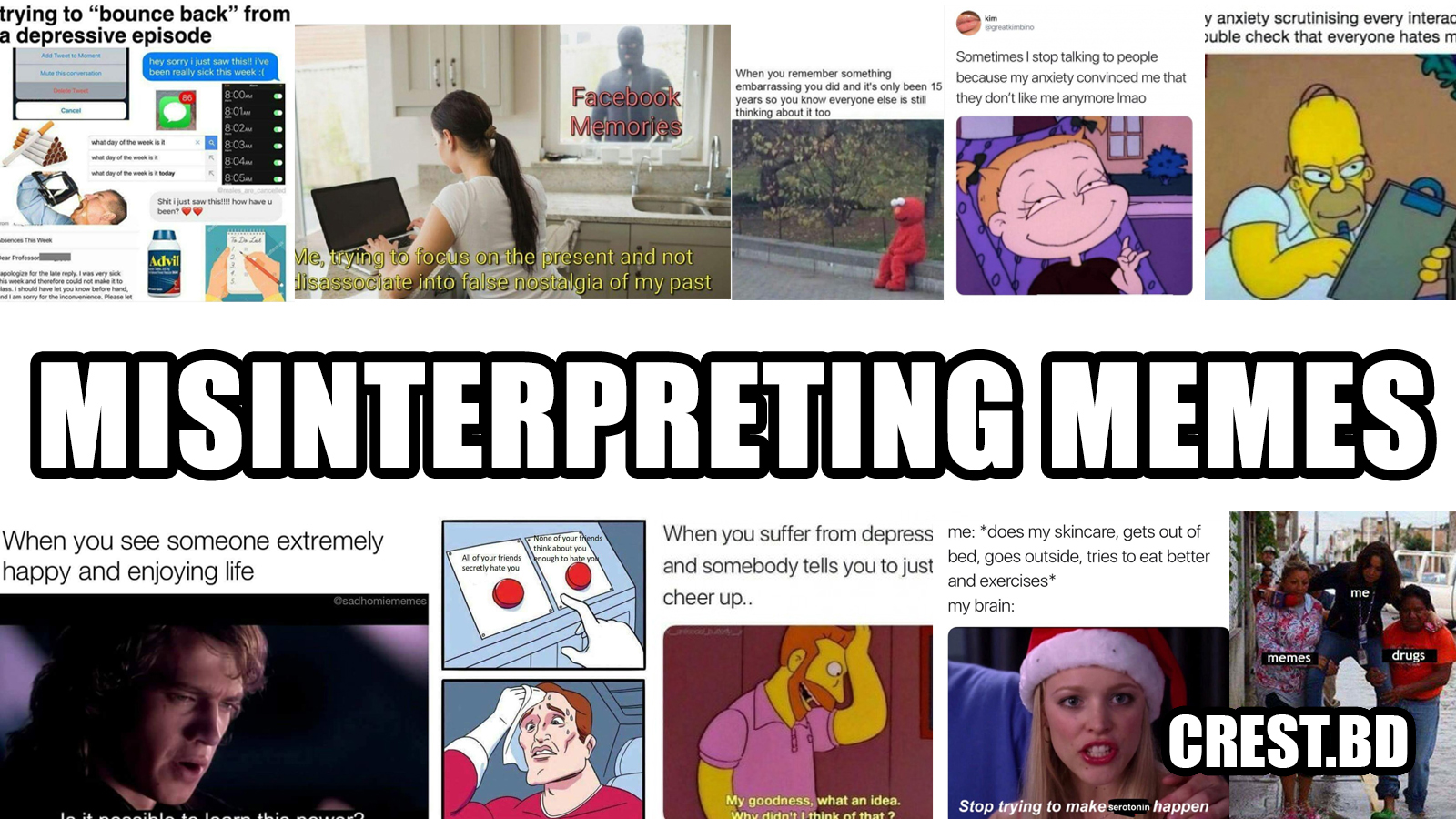



Memes dont help that much